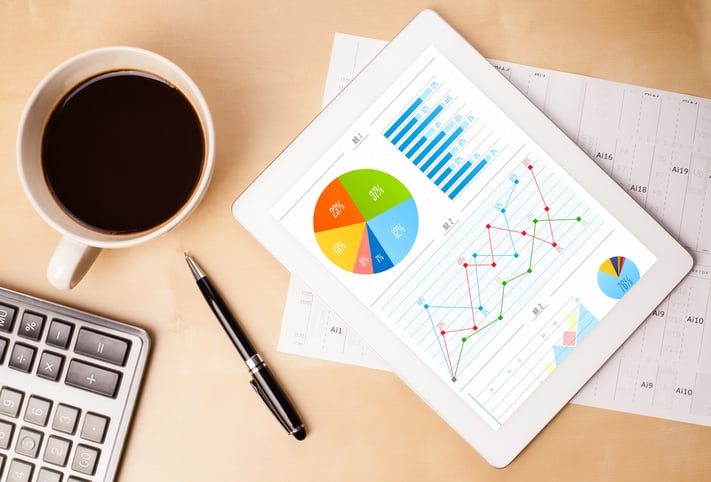First, an important point. Pie, the dessert, is great.
But, not all pie is worthy of attention. Pie charts – which have made an appearance in nearly every conference room across America – are actually quite poor at communicating data.
When you’ve done the important work of aggregating, cleaning, structuring and appending your data, the final product is likely a detailed database with far more information than the average brain can easily process. Leaders in your organization need to be able to easily identify and communicate what’s important and what’s not. Pie – both charts and the much tastier form – likely won’t be much help, but fortunately, there are more advanced data visualization strategies that will.
But, What is Data Visualization?
Data visualization is a process of synthesizing your data in order to create graphical representations that tell the strategic story. Through elements such as charts, graphs, and tables, a clearer picture of trends, patterns and interactions emerge.
The goal of data visualization is to enable quicker, more insightful decisions. Your mountain of data can’t be truly helpful if you aren’t able to extract clear insights from the vast rows and columns of data. This can be real challenge if your company (like most) doesn’t have an in-house data scientist on staff. It’s been shown that companies with advanced insights-driven capabilities are 2.8 times more likely to report double digit, year-over-year growth than companies that are still at the beginner stage.

Why is Data Visualization Important to Businesses?
The rate of data generation is growing exponentially, and put simply, data visualization makes sense of the endless streams of information. Humans created 1.7 MB of data every second last year. It’s estimated that 1.145 trillion MB of data is being created every single day. Even organizations that say “we don’t have much data” are quickly surprised at the sheer volume that is actually available.
Big data is a huge asset, a veritable goldmine of information about customer behaviors, preferences, buying propensities, strategic opportunities and potential threats. But it’s just not obvious when looking at raw data. The human brain is capable of much, but this is a job for advanced data visualization tools that will quickly identify what needs attention and exploration.
5 Data Visualization Tips
Much like Indiana Jones you must choose the right cup…er, the right graphic element to illustrate your data story. Here are a few tips to keep in mind.
- Keep your audience in mind. Who are the key stakeholders in your organization, and what kind of information do they need? What kinds of decisions will they be making, and how skilled are they at interpreting data visualizations?
- Define your purpose and set clear goals for your visualization strategy. Doing this upfront to prevent unnecessary work and unintentionally confusing data graphics.
- Choose the right charts for your goals. There are many visualization possibilities – scatter plots, line graphs, bar charts, area charts, and so on. And though we’ve been a bit down on ever-popular pie charts, there’s a time and place for them, too. Pie charts are good at showing the relationship between parts or percentages of a whole, but can distort the information and make clear takeaways more difficult. Consider if other forms of design can tell the story better.
- Use color effectively. Using color to highlight key data sets can be a simple, but powerful, communication tool if used wisely. Too much color can be confusing to the eye. It’s a best practice to use the same color for the same kind of data. Use different shades of the same color to communicate varying levels of data around a single metric.
- Keep it simple. A good visual element tells a story, and it needs to be clear and concise. An effective visualization is balancing act where complex data analysis is brought to life through easy-to-understand visuals that work in harmony
The process of creating beautifully simple, easy-to-interpret data visualizations can actually be quite complex. The data scientists at B2E offer data visualization services that help clients uncover the hidden data stories just waiting to be told.
- Through MotusBase, we organize and analyze data with customized dashboards that help businesses gain the most pertinent, actionable insights. Our MotusData process gathers, organizes, visualizes, and prioritizes your data.
- MotusOnDemand develops easy-to-read customer insights so businesses can understand them more deeply and act more quickly. Data views include consumer behavior segmentation, geography/state, individual/household/home, market penetration, and management.
Reach out to the data experts at B2E for a free data visualization consult to get started.
